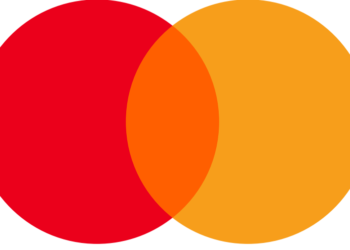Socio-economic problems remain significantly challenging for Georgia. Specifically, in 2020, 21.3% of the Georgian population fell under the absolute poverty line. To support the most vulnerable within society, states ordinarily provide diverse social assistance, sometimes including subsistence allowance. In Georgia, the subsistence allowance program provides financial aid to the country’s poorest families, which is determined by the Social Service Agency rating system. The lower a family’s rating, the poorer their financial position. Recent studies have, however, indicated that the program does not help beneficiaries to get out of poverty and instead encourages them to maintain a low income in order to receive the allowance. Moreover, the Georgian government plans to significantly reform the program in the near future. According to the planned reform, instead of providing money directly, families will be given job opportunities to improve their financial positions. Before changes are made within the program, we take a closer look at the dynamics and structure of the population to have been receiving the subsistence allowance over the last five years.
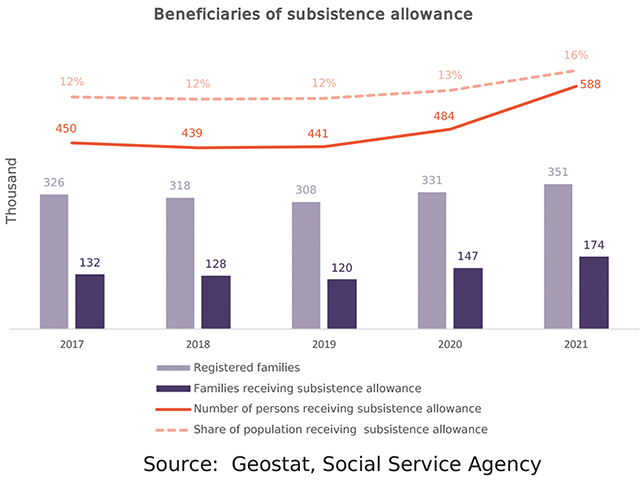
Beneficiaries of subsistence allowance
Every family in Georgia can register on the Social Service Agency’s platform and request the subsistence allowance. Overall, the number of registered families and families receiving subsistence allowance decreased between 2017 and 2019 (registered families dropped from 326 thousand to 308 thousand, and families receiving subsistence allowance went from 132 thousand to 120 thousand). However, from 2019 to 2021, the number of registered families increased by 14% and reached 35 thousand, and the number of families receiving the subsistence allowance increased by 46%, amounting to 174 thousand. It should be noted that over the analyzed period, on average, among registered families, 42% of them received the subsistence allowance.
Subsequently, the number of persons receiving the subsistence allowance decreased between 2017 and 2019, from 450 thousand to 441 thousand, and from 2019 to 2021 it increased by 33% and amounted to 588 thousand. Over the analyzed period, the share of the population receiving the subsistence allowance rose from 12% to 16%.
The increase in the number of beneficiaries receiving the subsistence allowance in 2020 and 2021 was driven by the Covid-19 pandemic and the subsequent decrease in income for many families. Moreover, from June 2021, a new score category – 100001- 120000 was added to the Agency’s rating system, which impacted the 2021 increased statistics.
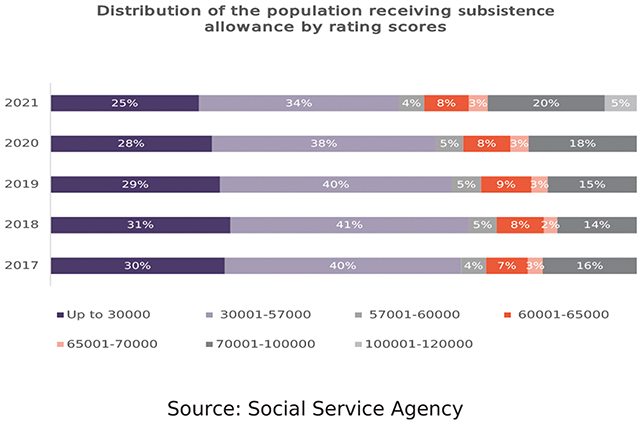
Distribution of the population receiving subsistence allowance by rating scores
As mentioned above, the amount of subsistence allowance is determined by the aforementioned ratings. The lower the score, the more vulnerable the family is, and the higher the allowance for every family member. The dynamics of subsistence allowance recipients reveals that the majority of people fell into the two lowest groups over the analyzed period.
However, the shares of these two groups have been shrinking gradually. For instance, in 2017, the share of those with a lower rating than 57000 was 70%, while in 2021 this figure had shrunk by 11 percentage points and amounted to 59%.
Meanwhile, the shares of other categories have increased modestly. Most noticeably, the share of those in the 70001-100000 category rose by four percentage points and amounted to 20% over the analyzed period.

Share of families receiving subsistence allowance by region
To gain a broader picture of the subsistence allowance beneficiaries, it is important to break down the dynamics of families receiving the allowance at the regional level. From 2017 to 2019, in exception of the regions of Adjara, Guria, Samegrelo-Zemo Svaneti, and Kvemo Kartli, the shares of families receiving subsistence allowance decreased. However, from 2019 to 2021, the share of families receiving the subsistence allowance increased in every region. The most noticeable increase was recorded in Racha-Lechkhumi and Kvemo Svaneti (8.1 percentage points), and the least in Tbilisi (3.6 percentage points).
Overall, in the analyzed period, on average the highest shares of families receiving the subsistence allowance were recorded in Racha-Lechkhumi and Kvemo Svaneti (43.4%), Mtskheta-Mtianeti (16.7%), and Samegrelo-Zemo Svaneti (16.6%), while the lowest were recorded in Samtskhe-Javakheti (8.3%), Tbilisi (9.2%), and Imereti (11.2%).
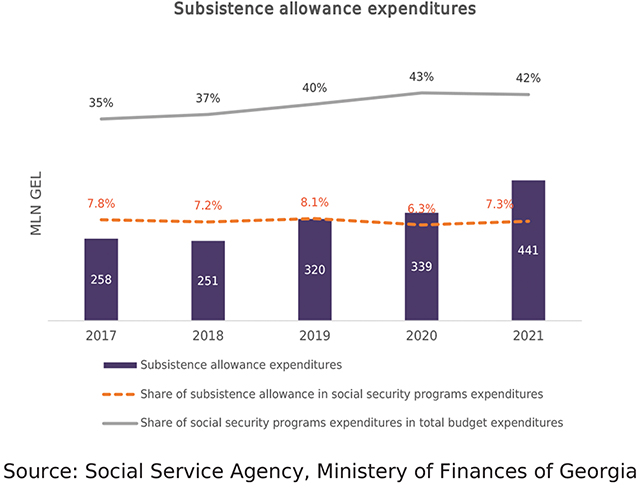
Distribution of the population receiving subsistence allowance by age groups
As the Georgian government decided to change the structure of the subsistence allowance program and to offer job opportunities instead of directly providing financial assistance, it is essential to analyze subsistence allowance recipients by age group to identify the number of labor-capable people among beneficiaries.
From 2017 to 2021, the breakdown of the population receiving subsistence allowance by age did not change significantly. However, over the analyzed period, the share of the 0-18 age group increased by 3.5 percentage points and amounted to 36%, while the shares of other age groups slightly decreased.
On average, over the analyzed period, among people receiving a substance allowance, the share of persons of working age (i.e. the 19-40 and 41-65 age groups) amounted to 52%, equating to approximately 250 thousand people. Hence, if the Georgian government is going to reform the program and provide these people with job opportunities, it would have to create approximately 250 thousand new vacancies.
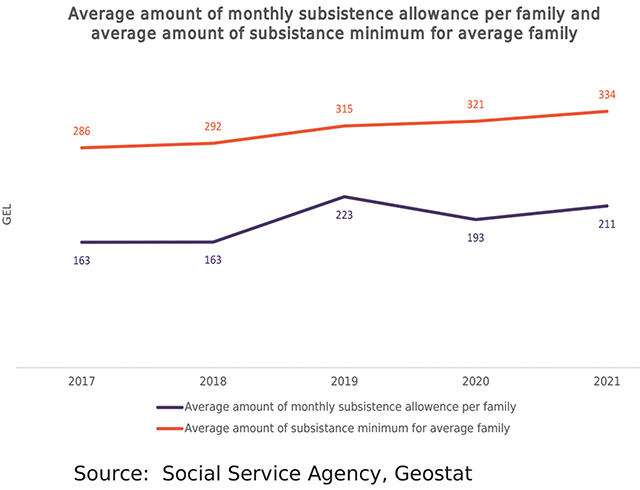
Subsistence allowance expenditures
Over the last five years, expenditure on social security programs has gradually increased (from GEL 3.3 billion to GEL 6 billion). As a result, the share of social security program expenditure in total budget expenditure also increased from 35% to 42% over the analyzed period.
Correlating with the increase in social security program expenditure, subsistence allowance expenditure also increased. During the analyzed period, subsistence allowance expenditure rose markedly from GEL 258 million to GEL 441 million, indicating an average annual growth rate of 15%. It is worth noting that over the analyzed period, the lowest number of subsistence allowance beneficiaries were recorded in 2019. However, compared to 2018, expenditure increased by 27% in 2019. This increase was determined by the overall growth of the social allowance financial package.
Over the analyzed period, the share of subsistence allowance in social security programs fluctuated from 6.3% to 8.1%.

Average amount of monthly subsistence allowance per family and average amount of subsistence minimum for average family
As mentioned above, the subsistence allowance aims to protect the most vulnerable in society and provide essential financial assistance to satisfy basic social needs.
Here, it is interesting to compare the average subsistence allowance amount per family to the average subsistence minimum for a family. The latter represents the amount of money that a family needs to meet basic needs in Georgia.
From 2017 to 2021, the average monthly subsistence allowance per family increased from GEL 163 to GEL 211, and the subsistence minimum for a family increased from GEL 286 to GEL 334.

A comparison of these indicators reveals that over the analyzed period, the average monthly subsistence minimum was on average 62% higher than the average monthly subsistence allowance.
Overall, from 2017 to 2021, the number of persons receiving the subsistence allowance increased. The main reason for this is the COVID-19 crisis, the subsequent income decrease for many families, and the change to the rating system in June 2021. The increase in the population receiving subsistence allowance and overall social package in 2019 led to a gradual increase in the program’s expenditures. However, in 2021 subsistence allowance for one family remained 59% lower than the average subsistence minimum for the average family over the analyzed period.
![]()


